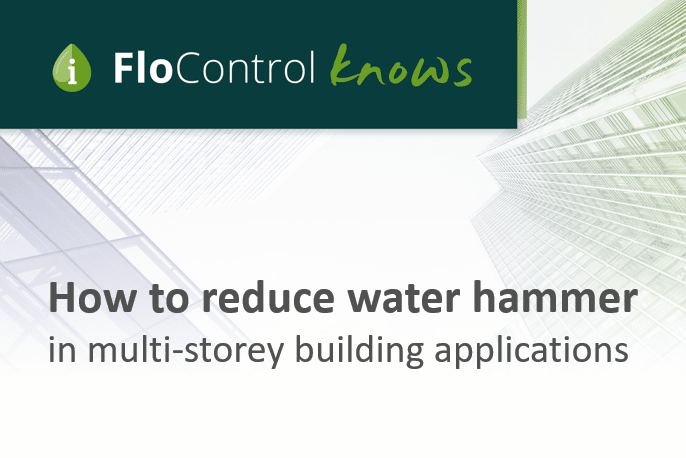
DNS Air Valve keeps water hammer at bay
24 April
Water hammer is a pressure surge caused by sudden changes in velocity – this can be due to the closure of a valve or a sudden loss of pressure. Multi-storey buildings have complex water supply systems that control hot and cold water to several floors; thus subject to frequent water hammer, caused by sudden changes in velocity.
In a multi-storey building, when water pressure reduces due to operational conditions and as the building level rises, air accumulates at high points. If entrapped air pockets in the water or fire main system are not automatically released, they can collapse on pump start. This can result in potential flow changes and water hammer in the network. Entrapped air can also cause reduced water flow and internal pipe corrosion.
Designed Network Solutions, an expert in Hydraulic System Solutions for multiple industries, has designed the versatile Air Valve DNS-3F-AS-HR specifically for buildings to cope in these circumstances.
The Air Valve DNS-3F-AS-HR ensures proper system operation allowing the release of air pockets during working conditions, the intake of large volumes of air during draining operations and pipeline bursts and air discharge with controlled speed, to prevent water hammer.
The exclusive double anti-slam technology prevents unwanted surges and pulsations and provides perfect sealing at low pressure conditions.
Operating Principle
Intake of large volumes of air
During pipeline draining or pipe bursts it is necessary to bring in as much air as the quantity of outflowing water to avoid negative pressure and serious damages to the pipeline and the entire system.
Controlled air discharge
During the pipe filling it is necessary to avoid rapid closures, responsible for water hammer effects. The anti-shock feature of the DNS-3F-AS-HR will control the air outflow, thus reducing the velocity of the approaching water column. The risk of overpressure will therefore be minimised.
Air release during working conditions
During operation the air produced by the pipeline is accumulated in the upper part of the air valve. Little by little it is compressed and the pressure arrives to water pressure, therefore its volume increases pushing the water level downwards and allowing the air release through the nozzle.
Application and Installation
A: Installation on a typical vertical riser of high rise buildings and plants.
1.Reducing Valve DNS-410-PN16-CPRV
2.Relief Valve DNS-VSM-PN16-CPRV
3.Air Valve DNS-1”-3F-AS-BF-BSP-HR-SE
B: The air valve is installed before and after the check valve of a pump to allow for the controlled air discharge during pump start and air release in working conditions.
It is recommended to check and guarantee a minimum working pressure in order to avoid leakage, that can occur especially within high rise building applications in dynamic conditions.
To avoid pipeline debris or pipe scale blockage an external strainer is fitted to the air valve inlet. The strainer is easy to clean and adds to the valve’s reliability once installed. Another design feature of this model is the inclusion of a metallic threaded outlet, which allows the conveyance of air flow in and out as well as possible spurts created during rapid filling and the evolutions of transients.
If you want to know more about the DNS-3F-AS-HR Air Valve or discuss your design with an expert, please contact FloControl Ltd.
Authors: Craig Stanners, Martyn Redman, Designed Network Solutions | 15 April 2020
Download


